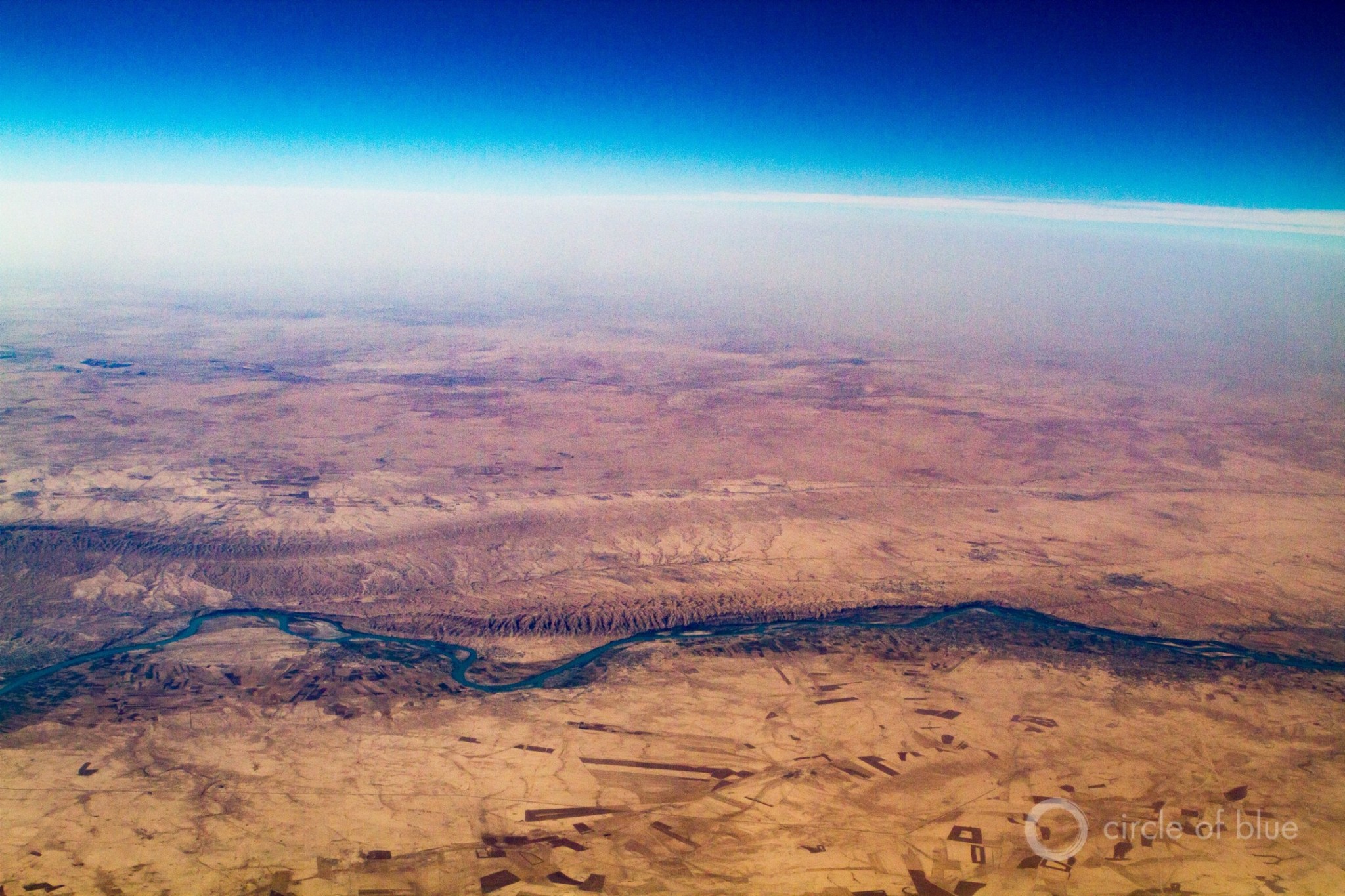
By Brett Walton, Circle of Blue
The Great Lakes News Collaborative includes Bridge Michigan; Circle of Blue; Great Lakes Now at Detroit Public Television; and Michigan Radio, Michigan’s NPR News Leader; who work together to bring audiences news and information about the impact of climate change, pollution, and aging infrastructure on the Great Lakes and drinking water. This independent journalism is supported by the Charles Stewart Mott Foundation. Find all the work HERE.
- National actions take precedent in climate adaptation and mitigation over watershed-level plans.
- Recognition of water in national climate plans is increasing but more could be done.
- The Paris Pact for water has sound principles but there has not been a formal assessment of its outcomes.
It was, many believed, a sign of progress.
For years, water had been an afterthought at the annual UN climate conferences, even though deficits and surpluses of water are two of the most damaging ways in which people experience a warming planet.
The breakthrough happened in 2015, at the landmark conference in Paris. The central story at that international gathering was an agreement to limit global warming to 2 degrees Celsius and to try for 1.5 degrees. But on the edges, water seemed to gain strength.
Though it was not mentioned in the final agreement, water was a lively discussion topic as well as the subject of position papers and side agreements. Businesses pledged to measure and report their water risks. Consideration of water “became relatively serious,” one attendee said at the time.
One victory was the Paris Pact, an outline for managing water and adapting to climate change according to the contours of natural river drainages. The agreement garnered more than 300 signatories, from international organizations like the World Bank, WWF International, and OECD to regional river basin associations, environmental groups, and universities. Government ministries from Albania, Morocco, and Peru also signed on.
Six years later, diplomats and campaigners are preparing for another critical climate conference. When they meet in Glasgow starting on October 31, the primary goal is to strengthen commitments from the Paris meeting so that the planet has a better chance at preventing catastrophic warming.
Water advocates, for their part, are positioning themselves to maintain a spot on the agenda. As they do so, it’s instructive to review past outcomes. What became of the Paris Pact?
At best it’s unclear, according to interviews with several people familiar with the UN climate conferences. They said that though the agreement’s core principles are sound, there has been no formal assessment of outcomes. Few people could point to remarkable successes.
“If it was one of those game changers, I probably would have had something to say about it,” Dean Muruven, WWF’s global policy manager for fresh water, told Circle of Blue. Muruven noted that agreements tend to proliferate at these conferences, which is why WWF is now being cautious about introducing new initiatives.
Henk Ovink, the Netherlands’ special envoy for international water affairs, said that even without a formal assessment, he did not think the Paris Pact was a wasted effort. He compared climate and water action to a mountain climber. Each action is a milestone that establishes a path up the mountain.
By championing skills development, data exchanges, systematic approaches, research and development, governance, and financing, the Paris Pact, in its intent, helped set the course for the climb. Ovink told Circle of Blue these worthy ambitions have produced a blueprint for action, a “trickle-forward effect.”
Managing water across a basin is the gold standard for most water people, Ingrid Timboe, policy director for the Alliance for Global Water Adaptation, told Circle of Blue. But her experience shows that the UN climate framework is a difficult venue for achieving those aims.
Timboe recalled being in UN climate meetings and raising the issue of transboundary water – the need for countries to cooperate on shared rivers, lakes, and aquifers. Other attendees chided her that though basin management was important, it should be dealt with in another forum.
“In the national climate space, the emphasis is on national,” Timboe explained. “When you start talking about things like transboundary adaptation or transboundary management, countries get adamant that the Paris process is a national process and things like transboundary adaptation or transboundary water resources management, while very important, this is not the process for them. That’s a learning curve within the water community because we emphasize transboundary management.”
There is still ample space for water in climate discussions. Timboe and others are mindful that the Paris climate agreement emphasizes national action for emissions reduction and adaptation. The national action plans, or NDCs in the lingo, are the focus for tracking formal commitments. They are also a natural vehicle within the climate world for reckoning with flooding, droughts, and wetlands preservation.
Recognition of water in these plans is increasing, Ovink said. In those commitments he sees slivers of the Paris Pact principles. But water commitments in the plans, he said, are still “not enough.”
An analysis of 80 NDCs by the Global Water Partnership in 2018 found that nine in 10 plans connected in some way to water. The Alliance for Global Water Adaptation is also beginning to analyze how water is being incorporated into these plans, underscoring that countries and their cities are driving the dual goals of adaptation and mitigation.
“It’s up to the countries to set what their commitments are, what their plans are,” Timboe said. “They can collaborate internationally, but it’s the country’s choice. It has to be always in this context of a nationally driven plan.”
Correction: Henk Ovink’s title is the Netherlands’ special envoy for international water affairs, not special envoy for international water.
Catch more news on Great Lakes Now:
Company formerly known as Nestle drops water withdrawal permit
Featured image: The Tigris River watershed is shared by Iraq, Iran, Syria, and Turkey. Photo © J. Carl Ganter/Circle of Blue




